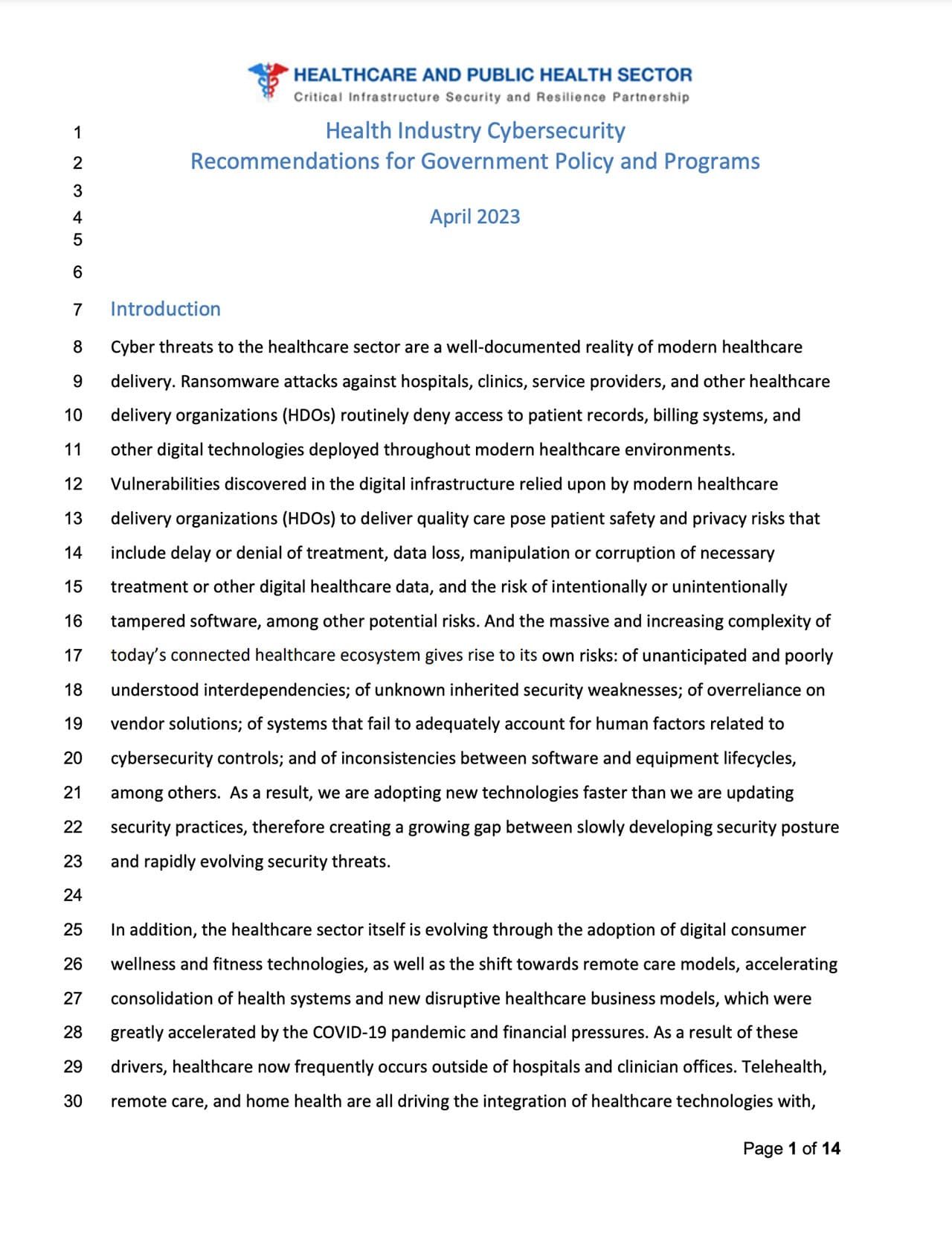Health Industry Cybersecurity Recommendations for Government Policy and Programs
Introduction
Cyber threats to the healthcare sector are a well-documented reality of modern healthcare delivery. Ransomware attacks against hospitals, clinics, service providers, and other healthcare delivery organizations (HDOs) routinely deny access to patient records, billing systems, and other digital technologies deployed throughout modern healthcare environments. Vulnerabilities discovered in the digital infrastructure relied upon by modern healthcare delivery organizations (HDOs) to deliver quality care pose patient safety and privacy risks that include delay or denial of treatment, data loss, manipulation or corruption of necessary treatment or other digital healthcare data, and the risk of intentionally or unintentionally tampered software, among other potential risks. And the massive and increasing complexity of today’s connected healthcare ecosystem gives rise to its own risks: of unanticipated and poorly understood interdependencies; of unknown inherited security weaknesses; of overreliance on vendor solutions; of systems that fail to adequately account for human factors related to cybersecurity controls; and of inconsistencies between software and equipment lifecycles, among others. As a result, we are adopting new technologies faster than we are updating security practices, therefore creating a growing gap between slowly developing security posture and rapidly evolving security threats.



